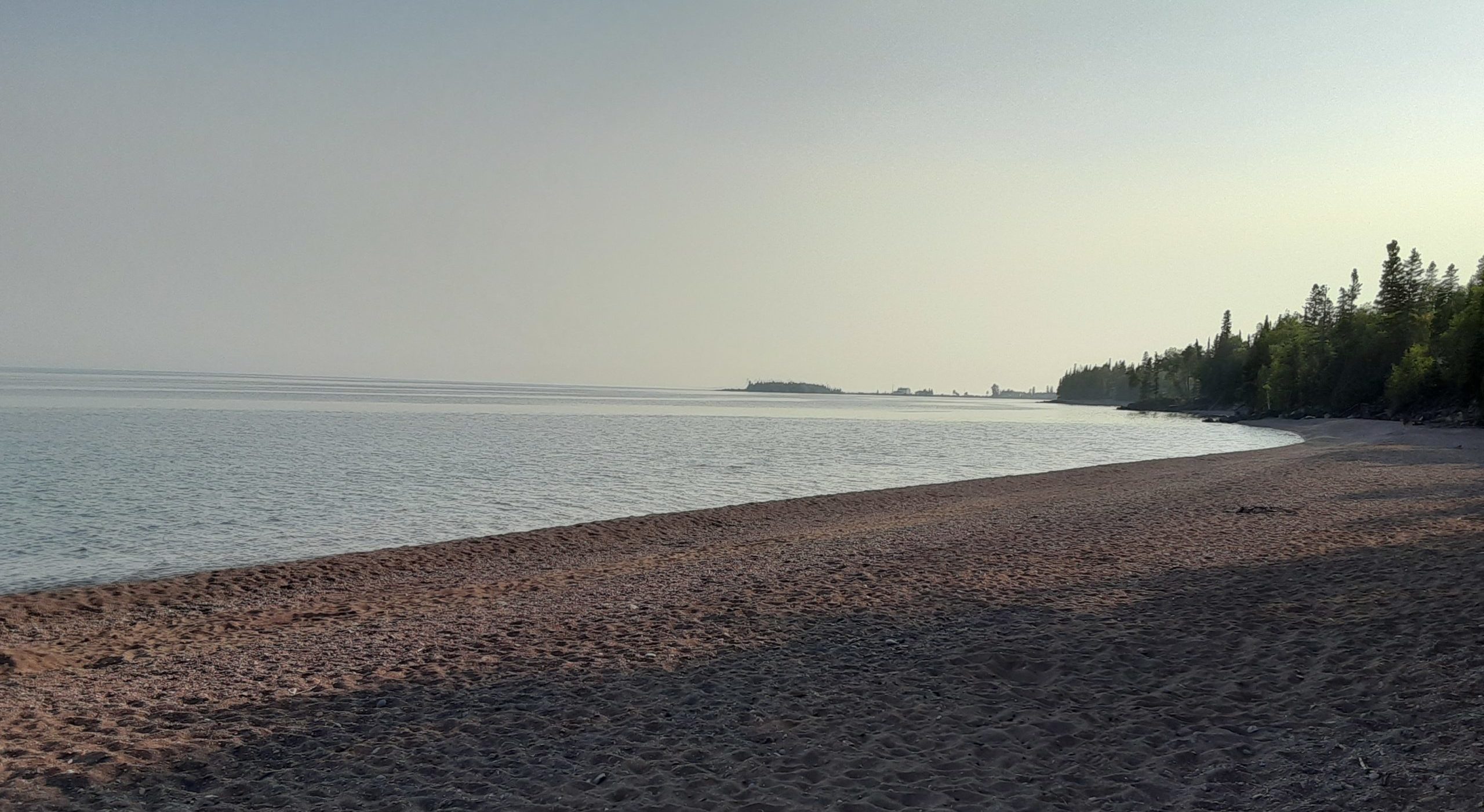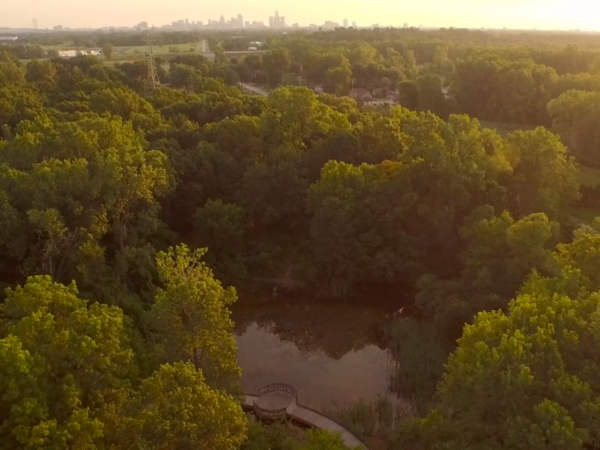
Editor’s Note: “Nibi Chronicles,” a monthly Great Lakes Now feature, is authored by Staci Lola Drouillard. A direct descendant of the Grand Portage Band of Ojibwe, she lives and works in Grand Marais on Minnesota’s North Shore of Lake Superior. Her two books “Walking the Old Road: A People’s History of Chippewa City and the Grand Marais Anishinaabe” and “Seven Aunts” were published 2019 and 2022, and she is at work on a children’s story. “Nibi” means water in Ojibwe, and these features will explore the intersection of indigenous history and culture in the modern-day Great Lakes region.
It began anew with a mom and her little girl, who just wanted to swim in Lake Superior a couple years ago.
This particular Minnesota beach was known as “Passion Pit” when I was growing up. It’s a quiet place outside the fray, where you could sit and have a fire, jump in the water, and if you’re a teenager, explore everything it means to be a young adult in a very small town. Hence the provocative name.
When the local mom and her little one got chased off by an irate private property owner, the question arose, “Whose beach is it, anyway?” about this stretch of land that’s been part of historical traditions and modern recreation.
To find the answer to the “ownership” question, you can go all the way back to Jim Wipson, who was my relative from Chippewa City, an off-reservation Ojibwe village just east of Grand Marais, Minn. I visited Jim at his home in Grand Portage in 2001, for a research project that would eventually become the book Walking the Old Road: A People’s History of Chippewa City and the Grand Marais Anishinaabe.
There was a clear turning point in our conversation when he looked me directly in the eye and said, “I want to tell you about the man who confiscated our land and a lot of other people’s land in Chippewa City.”

“This particular Minnesota beach was known as ‘Passion Pit’ when I was growing up.” (Photo Credit: Staci Lola Drouillard)
Ownership or Community?
I knew at that moment, that the story of Chippewa City was much bigger and more important than I ever knew. This was a place seemingly forgotten by history, but the truth is, Jim never, ever forgot, nor did many of the other elders that I talked to about what happened to the land at Chippewa City.
Jim explained that 76 years prior to our conversation, his grandmother Kate Anakwad Frost had signed away her land to a man named August Van Johnson, marking an “X” on the land deed, because she did not read or write in English. When I later researched Jim’s claims about the land, the paper trail confirmed what Jim had told me at his kitchen table that day.
The names August Van Johnson and Stina L. Johnson, his wife, appear on the majority of land abstracts at Chippewa City, including the lots along the beach. A place where families launched their fishing boats. A place where the kids played and where the community drew drinking water.
What was once Anishinaabe land was acquired by Johnson, the Cook County Registrar of Deeds at the time. Often, no money changed hands. In the 1920s, he sold it to the State of Minnesota and for many years the Minnesota Department of Transportation used that beautiful section of lakeshore as a gravel pit. After that it became “no man’s land.”
Nishkwakwansing, is the Ojibwe name for Chippewa City which means “at the edge of the forest.” The story of Chippewa City is very much about community, and how land ownership and property acquisition shaped the people.
It’s also about the vulnerability of off-reservation villages at the turn of the century. Jim felt that Chippewa City was an extension of Grand Portage, but sadly, it was without the equal protections related to land ownership. When the County imposed property taxes on the Indigenous residents of the village, most every family struggled to keep up, and that’s when A.V. Johnson stepped in.
As a community, Chippewa City was based on the principle of sharing — not just a sharing of the land and the waterfront, but also sharing food and community responsibilities, the things that make a community strong.
This Indigenous, community-based approach to land management is in stark contrast to the colonized view of land and property as a commodity or investment. Because land isn’t just land — it’s a provider of sustenance, a way to make a living, and an anchor for family, language and culture. It’s spiritual by nature, and supports the continuation of culture at its very source.

Grand Portage Tribal Council and Minnesota Officials. (Photo courtesy of Joe Friedrichs via Staci Lola Drouillard)
Today’s Actions
When that local mom started asking questions, committees were formed and meetings were convened, including when Minneapolis Director of Public Works Margaret Anderson Kelliher and Grand Portage Chairman Robert Deschampe discussed the matter in his pickup truck while they were enroute from the airport.
In late November, the Grand Portage Band of Ojibwe invited all to attend a land conveyance ceremony as the State had agreed to give their lots back to the tribal trust.
The Grand Portage drum group, the Stonebridge Singers, opened the event, and then the honor guard brought in four flags symbolizing nations within nations.
I was asked to talk about the history of the land and like me, every presenter had a personal story to share. It was the place where my great grandmother Elizabeth Anakwad was born, and where she raised 12 children. I spoke about my conversation with Jim Wipson and suggested that he and the rest of our Chippewa City ancestors would be very proud of what the Grand Portage Band, the Minnesota Department of Transportation and the “Passion Pit Task Force” have accomplished together. I was proud to be part of that task force.
From that day forward, everyone, including moms, dads and their little ones will always have a place to sit by the water and honor the people and the community spirit of Nishkwakwansing.
Catch more news at Great Lakes Now:
The Catch: Meet the author behind “Nibi Chronicles”
Nibi Chronicles: The “Water is Life” festival goes beyond the music
Featured image: Elizabeth (Anakwad) Drouillard and Bill Drouillard. (Photo courtesy of Staci Lola Drouillard)




